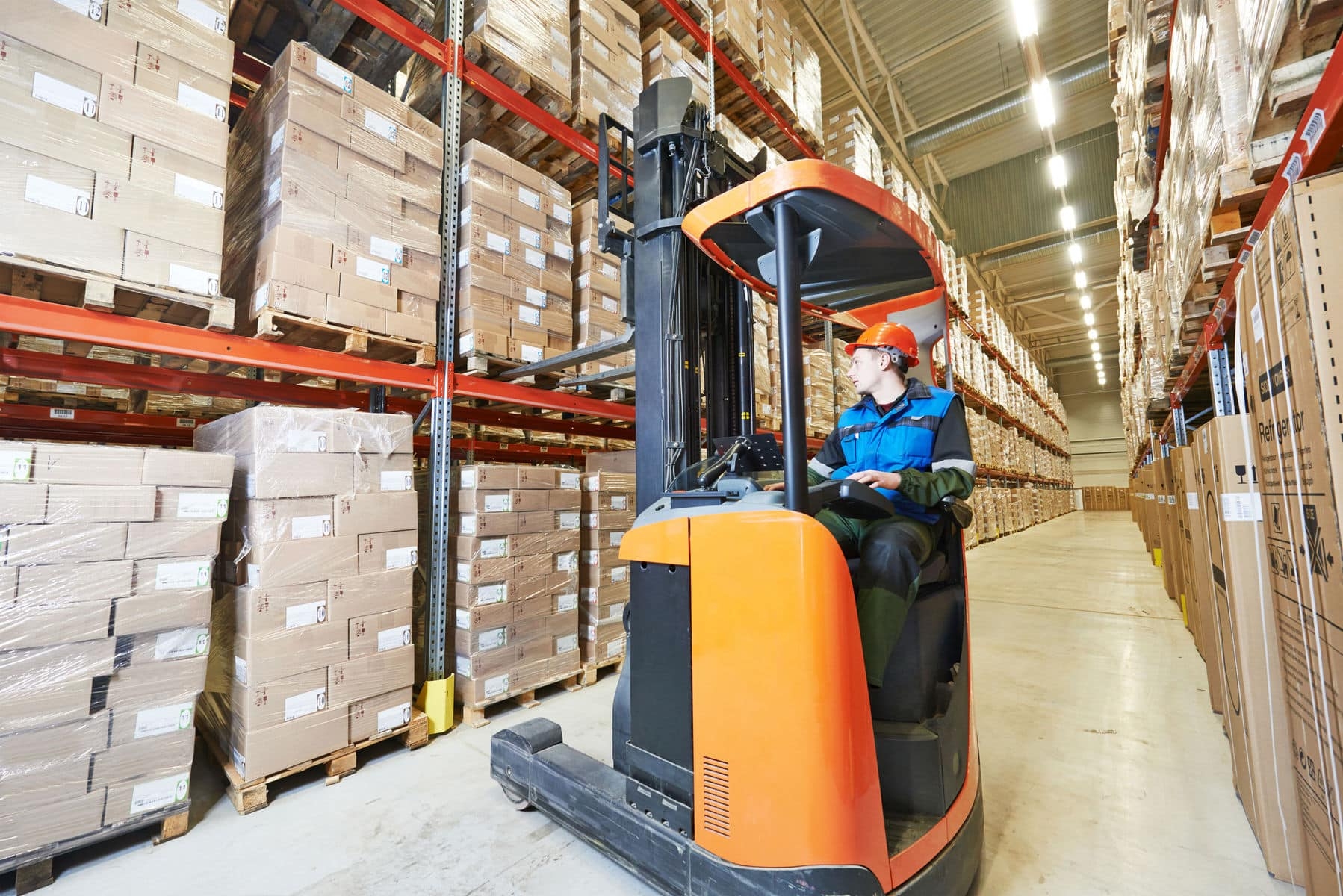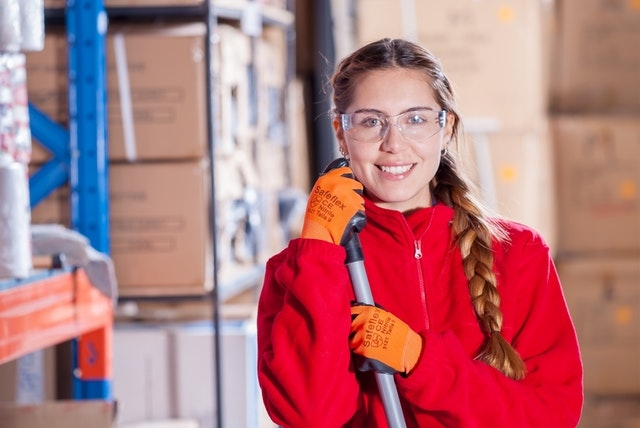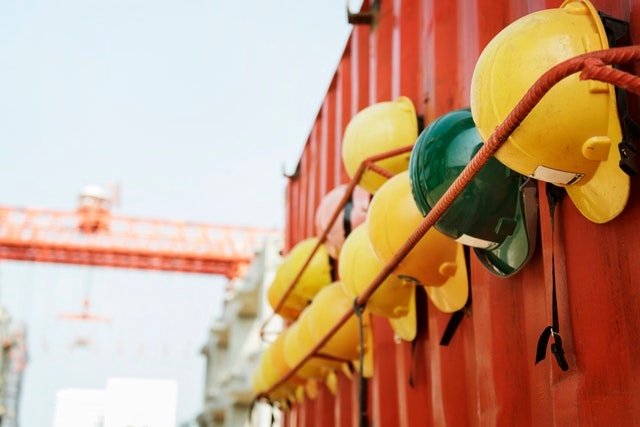Introduction
Ejected materials, contact with dangerous moving parts, entanglement, entrapment, impact with ejected materials, burst wheels, hot surfaces and materials, operator distraction, inadequately fixed equipment, noise, hand/arm vibration, electricity, fire/explosion, kick-back and hazardous substances e.g., harmful dusts.
These are some of the hazards you would expect to see in a suitable and sufficient risk assessment for bench and pedestal grinders. For employer who use this type of equipment, it is lot to think about.
Do you have a bench or pedestal grinder in your workplace? Then this article will be of interest to you. If you do not, this article will still have some interest and benefits to use as the principals of managing any type of work equipment is very similar.
They are many types of work equipment that use abrasive wheels across many sectors, however this article will focus on bench and pedestal grinders.
Things to Consider:
If used incorrectly, grinders can be extremely dangerous, it is an established fact that over 50% of recorded injuries are attributed to unsafe systems of work or errors made by the person operating the equipment. Whether the cause is due to bursting/broken wheels, flying/ejected particles, contact with dangerous moving parts or friction burns, injuries can be severe or debilitating resulting in hospitalisation.
We will discuss ‘safe systems of work’ later, in the meantime however let us have a look at some of the factors that cause accidents that lead to personal injury.
Over the years when I have visited premises that use bench/pedestal grinders the factors that can potentially lead to accidents are common and consistent and will often involve a combination of many of these factors. These inevitably include grinder not suitably and securely mounted to a bench, table or floor, the proper guarding is damaged or not in place, damaged or poorly maintained abrasive wheel, abrasive wheels not properly mounted or dressed, tool rest gap not kept to a minimum distance from the wheel, equipment poorly maintained, untrained operators and lack of correct Personal Protective Equipment.
Legal Aspect:
As we know, employers have a general duty under health and safety law to ensure the Health, Safety and Welfare of employees and others. More specifically, the Provisions and Use of Work Equipment Regulation (PUWER) place duties on employers. Here is a selection of those duties that apply to bench/pedestal grinders:
- Equipment to be maintained in a sufficient state, in sufficient working order and in a good state of repair.
- The employees using, supervising or managing the use of equipment are provided with adequate, clear health and safety information including where necessary, written instructions e.g., Safe Operating Procedure (SOP) on its use and suitable equipment marking and warnings, and training on the correct use of the equipment.
- Ensure ethe necessary guards are in place.
- Prevent or control materials being ejected from the equipment.
Training
I think it is important to spend some time on training specifically abrasive wheels. Training ensures that the necessary control measures are in place to prevent serious incidents e.g., failure of equipment, personal injury. Training should include step by step instruction when handling abrasive wheels in addition to safety checks and identifying potential issues.
In the guidance document HSG17 (Third Edition, published 2000): Safety in the use of abrasive wheels, the Health and Safety Executive (HSE) advise that as a minimum, training should cover:
- Hazards and risks arising from the use of abrasive wheels and the safety control measures and procedures to be followed. This part is normally covered by way of the risk assessment process.
- Methods of marking abrasive wheels with their type, size and maximum speed (a requirement of PUWER).
- How to store and handle abrasive wheels.
- How to inspect and test abrasive wheels.
- The functions of all components used with abrasive wheels such as flanges, blotters bushes, nuts etc.
- How to assemble abrasive wheels correctly to ensure they are properly balanced and fit for purpose.
- The proper method of dressing an abrasive wheel (removing dulled abrasive or other material from the cutting surface and/or removing material to correct any uneven wear of the wheel).
- The correct adjustment of the work rest (bench/pedestal grinders are equipped with an adjustable rest that supports workpieces while it is in contact with the abrasive wheel, it is designed to prevent the workpiece form being jammed between the wheel and the rest).
- The use of Personal Protective Equipment (PPE).
They are many accessible training organisations throughout the UK who offer training courses and you can obtain further information from the British Abrasives Association. A point worth noting. The HSE recommend that a record of training in the safe mounting of abrasive wheels is kept, showing the trainee’s name and date of training.
Characteristics of Abrasive Wheels
A key part of abrasive wheels training is understanding their characteristics e.g., the elements of the manufacturing process of an abrasive wheel and includes the type of abrasive used, grain and grit size, grade, structure and bond type.
The wheel marking system (must conform to Annex A of BS EN 12413), normally a label on each wheel contains important information on the maximum permissible speed that the wheel can be used, restrictions of use, shelf life and a traceable number.
Safety on Bench/Pedestal Grinders
Wheel Breakage
Manufacturers take all reasonable precautions, including speed tests, to supply sound wheels, and various methods used in their construction to reduce the risk of breakage. Nonetheless, breakage can still occur while being used due to defects from misuse or incorrect handling and storage. Incorrect selection of wheel type, improper mounting, excessive out-of-balance conditions, excessive speed, defects on the grinding machine, along with misuse and malpractices when using the machine can all be contributing factors that can result in breakage.
Inspection
We should always unpack wheels carefully and clean (with a brush) before examining for possible damage while in transit.
Carrying out a simple ring test i.e., ensuring the wheel is dry and free of loose dust and tapping it with light non-metallic implement should result in a noticeable ring. If there is dull sound, then the wheel should not be used.
Handling
Strange as it may sound, wheels are generally relatively fragile and should be handled with care in order to avoid chipping, cracking and breakage. Handle wheels carefully to prevent them being dropped of bumped.
Storage
Although many of us will only have a single bench/pedestal grinder with the wheels presently on the machine, however if we keep a number of wheels or only a single wheel as a spare, we should ensure you use suitable shelves, drawers or other suitable storage methods that can minimise deterioration, they must be kept dry and be subject to extreme temperatures.
Speed
The speed at which your abrasive wheels revolve is extremely important, by not following the manufacturers guidelines in respect of speed, can result in wheel burst leading to potential serious injury not just to the machine operator but also to anyone who may be standing or walking nearby.
The Machines
Abrasives wheels should only be mounted on the type of machine for which they are intended. These days, aaccident’s do occur due to incorrect wheels mounted on grinding machines.
- Bench grinders should always be mounted (normally with a minimum of two bolts) on a suitably strong and stable bench.
- Pedestal grinders should be heavily built and mounted on good, solid foundations e.g., a flat level concrete floor.
In both cases, in accordance with the manufacturer’s instructions.
Comprehensive technical guidance on spindles, machine bearings, speed control and stopping devices etc. are covered in HSG17. Additionally, these important technical details are comprehensively covered in the training provided by established Abrasive Wheels Training providers.
The Mounting of Abrasive Wheels
The importance of mounting abrasive wheels by a competent person who has received the necessary, suitable training provided by a recognised training organisation cannot be emphasised enough. Inadequately mounted wheels greatly increase the risk of them bursting. The HSE states that ‘many accidents could have been prevented if the people mounting the wheels were instructed in the hazards arising from incorrect mounting and in the correct method of assembly’.
Guarding
The principal functions of guards on bench mounted and pedestal grinders is to contain wheel parts in the event of a wheel burst and to prevent the operator from coming into contact, with the wheel.
Before operating the machines, checks should be made to ensure wheel guards are correctly in place and in a good state repair, this includes the adjustable visor fitted at the front and on top of the guard.
Tool Rests
The tool rests are designed to hold and steady tools (job pieces) while being ground and the gap between the tool rest and should be kept to minimum as the great gap, the greater the risk of tool/job piece becoming trapped.
Emergency Stops
Earlier we discussed the legal aspects of operating work equipment and the requirement to ensure the correct start stop controls are in place. This is particularly important with bench/pedestal grinder in that they may have to stopped quickly in an emergency.
As part of your pre-use checks and regular inspections of your grinder a function test of the stop function should be conducted.
Summary of Hazards
The use of bench/pedestal grinders have many are associated with many hazards that need to be adequately controlled. Let us briefly look at the most obvious:
- Dangerous Moving Parts.
- Flying Objects.
- Ejected Material.
- Pinch Hot Components.
- Fire.
- Explosion.
- Dust.
- Electricity.
- Noise.
- Vibration.
The most effective way to safely manage grinders and ensure legal compliance is to develop and effectively implement a Safe System of Work (SSOW). A suitable SSOW should contain the following elements:
- The completion of a suitable and sufficient risk assessment.
- The formulation and implementation of the safety control measures and procedures identified through the risk assessment process. Key areas to consider include guarding, emergency stops, maintenance/inspections, fire controls (safe siting of the equipment, dust control, PPE, training.
- These control measures should be incorporated, into a suitable written Safe Operating Procedure (SOP).
- The provision of information on the hazards identified in the assessment and the risks associated with these hazards, along with instructions and training on the control measures and procedures.
- Specific Abrasive Wheel training by a recognised training body to ensure employees can use, set up and balance abrasive wheels etc., needs to be provided.
- An effective means of monitoring the control measures and procedures that have been implemented e.g., pre-use checks, inspection and maintenance.
- A means of reviewing the SSOW.






